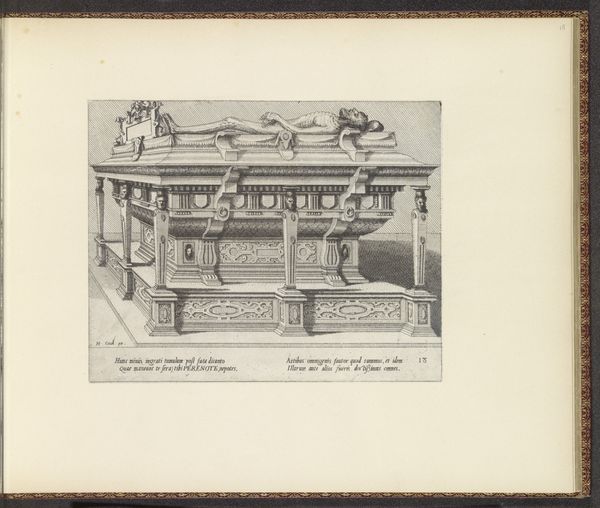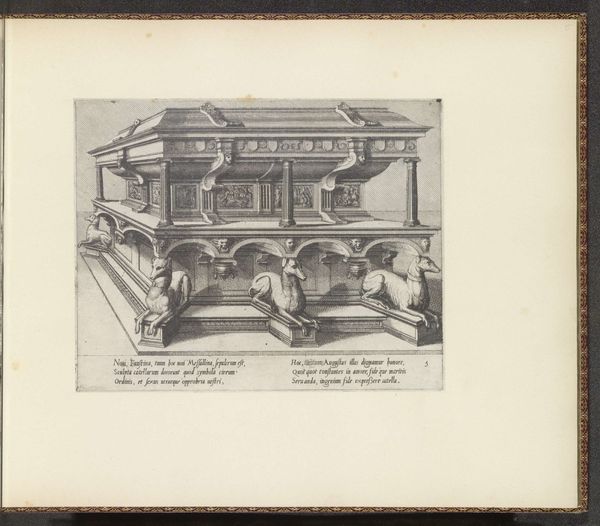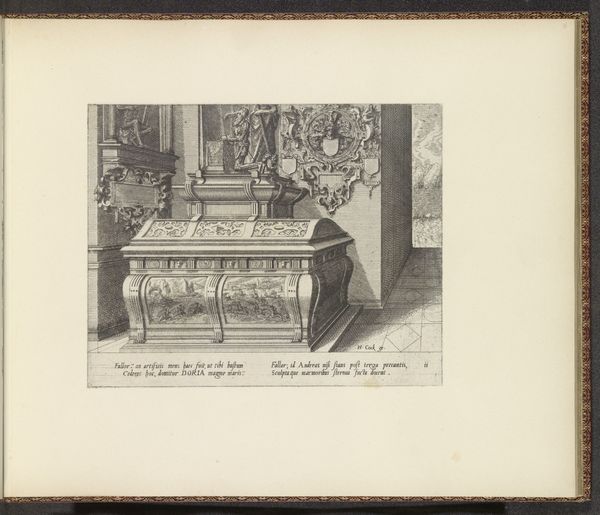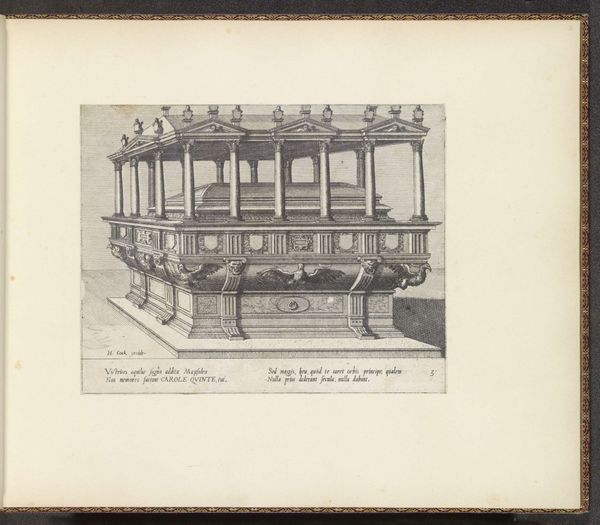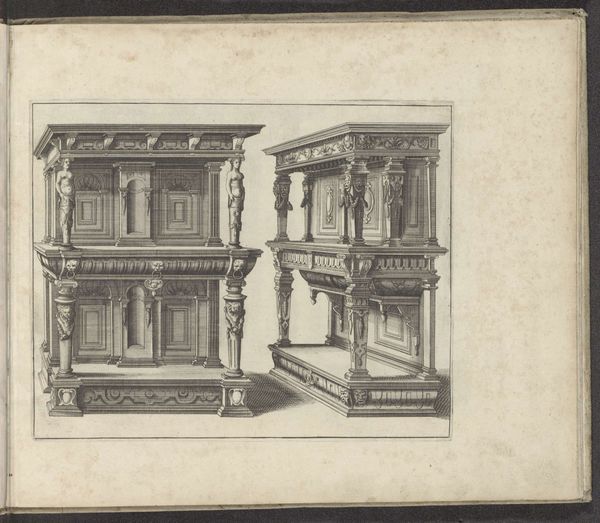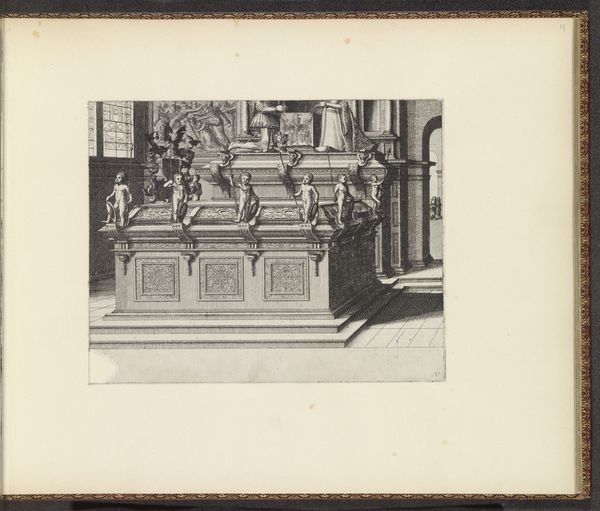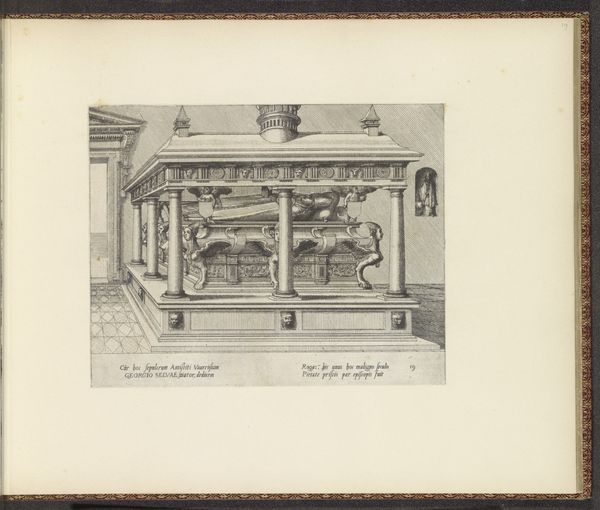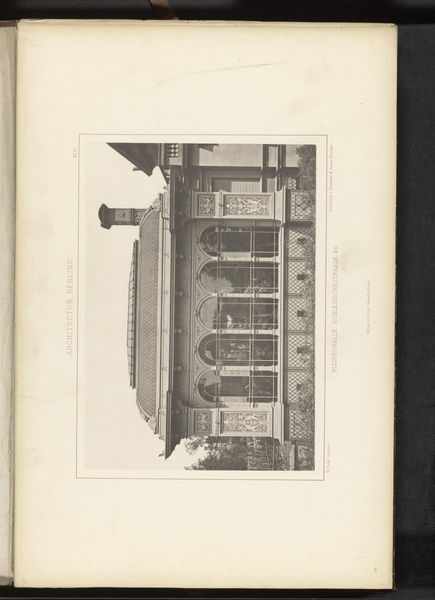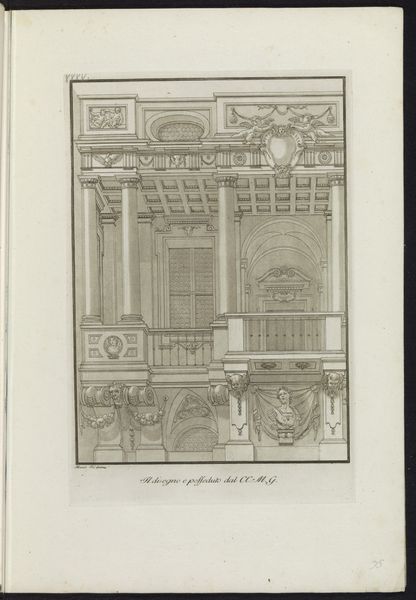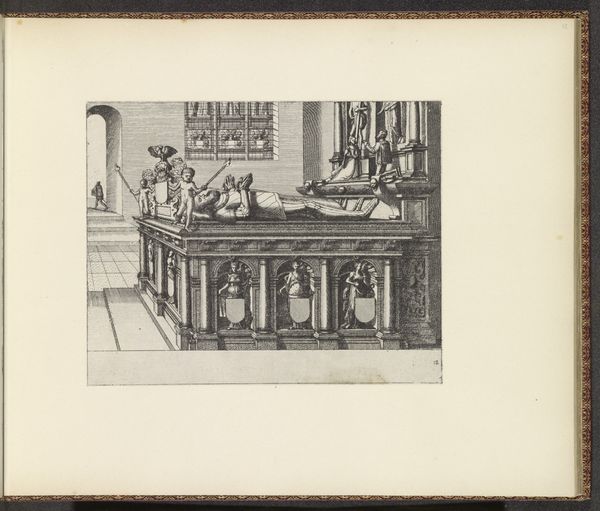
Vrijstaand grafmonument met baldakijn voor een man 1563
0:00
0:00
johannesoflucasvandoetechum
Rijksmuseum
drawing, print, paper, ink, engraving, architecture
#
portrait
#
drawing
#
ink paper printed
# print
#
paper
#
form
#
11_renaissance
#
ink
#
coloured pencil
#
line
#
history-painting
#
engraving
#
architecture
Dimensions: height 167 mm, width 210 mm
Copyright: Rijks Museum: Open Domain
Curator: Here we have "Freestanding tomb with baldachin for a man," an engraving by Johannes or Lucas van Doetechum from 1563. What are your first thoughts? Editor: My eye is immediately drawn to the sheer precision of the lines, the detail in the architectural elements. It speaks of immense labor, creating such intricate detail through the printmaking process. Curator: Absolutely. This work gives us insight into the values placed on memorializing figures of authority in the 16th century. The architectural setting of the tomb and the presence of figures implies it served a crucial role in constructing a social and historical narrative for posterity. Editor: I find the contrast between the cold stone of the tomb and the vulnerable, reclining figures striking. It highlights the materials as central to the construction of status; the engraver meticulously captures how stone communicates power and endurance, whilst bodies are mere mortals. What was the original function of this engraving, how would it have been consumed and by whom? Curator: The print likely circulated among elite circles, potentially as a model for funerary monuments or as a display of artistic and architectural trends. These images not only reflected status but also perpetuated particular visual styles associated with power. Editor: The choice of engraving as a medium, rather than sculpture, democratizes its availability in a way. Did this shift access to such visual displays, changing how the wealthy promoted their power? Curator: Exactly. Printmaking created possibilities for wider distribution, playing a crucial role in disseminating aesthetic and ideological notions among artists, patrons and those further down the social ladder who may not have commissioned large scale architectural projects, influencing tastes more broadly. Editor: Considering how it depicts the labor-intensive stone tomb construction and was itself produced by skilled printmakers, this image layers different kinds of making and skill together for the viewer. It highlights the values attributed to labor, materials, and their representation within Renaissance society. Curator: Reflecting on the layers of socio-political communication at play in this memorial through printmaking broadens my appreciation of the power such artworks had and still have today, allowing us insight into past beliefs. Editor: Indeed. Analyzing its materials alongside social contexts, allows me to value more fully the image and object qualities through production and reception that the Doetechums were crafting and circulating to new audiences then and now.
Comments
No comments
Be the first to comment and join the conversation on the ultimate creative platform.

